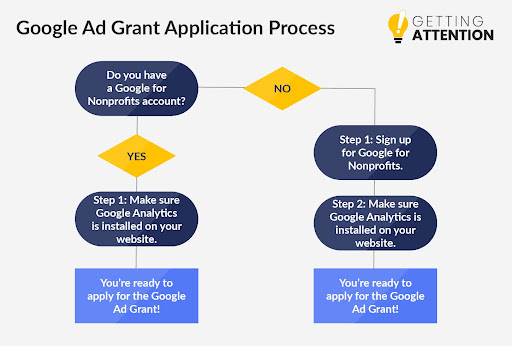3 Marketing Moves to Strengthen Your Membership Recruitment
Your membership-based organization likely leverages tools like email and social media to market your initiatives and promote your mission. While effective, these marketing strategies are standard and your supporters probably expect them.
Diversifying your marketing strategies can help you reach new audiences, track helpful metrics, and engage your current membership community. Consider elevating your marketing approach past traditional strategies like membership mailers with these savvy strategies:
Before we dive into these tactics, let’s review what sets membership marketing apart from other types of campaigns. Consider your membership-based organization’s current marketing strategies and if any of these would particularly resonate with your target audience.
Membership Marketing Nuances
As a membership-based organization, you have many unique assets that can enhance your marketing efforts compared to other types of nonprofits, including your:
- Existing membership networks. Your loyal members are committed to the organization and provide access to a valuable network of potential marketers on your behalf. With the right training and materials, you can equip them to become examples of social proof for your membership program.
- Value proposition. From the enormous networking potential your organization offers to the specialized educational enrichment resources, you have plenty of appealing membership benefits to share in your marketing messages.
- Core message of belonging. Your membership program is more than a ticket to conferences and industry events — it’s a tight-knit community that can lead to friendships outside of the workplace as well. Offering a built-in community aspect to your potential members offers them a place where they can make friends for life.
Ultimately, the most valuable asset your organization should leverage is your distinct achievements and values. For instance, if your union wanted to attract new members, you could demonstrate your impressive community track record using a member-facing tech-stack to highlight how your member dues fuel your mission.
3 Marketing Moves for Membership-Based Organizations
1. Google Ad Grants
As the host of billions of searches each day, Google’s results page is a valuable marketing channel for your membership program. However, it can be challenging to occupy the most visible spots at the top of the results page without paying for expensive ad promotion.
However, for nonprofits with a recognized charitable status, you can apply for the Google Ad Grant, which gives you $10,000 worth of free advertising space at the top of the search engine results page.
Plus, it’s easy for qualified nonprofits to apply. First, check Google’s eligibility requirements to ensure that your organization qualifies.
Getting Attention’s guide to Google Ad Grants’ flowchart explains the next steps to take:

- Do you have a Google for Nonprofits account? If not, sign up for the program.
- Next, ensure that Google Analytics is installed on your website.
After this process, you can start planning and executing your Google Ad Grants campaigns. If you need help making the most of your grant, consider working with a Google Ad Grants agency to research, launch, and monitor winning campaigns.
2. Search Engine Optimization (SEO)
Even without the Google Ad Grant, you can boost traffic to your membership organization’s website for free by aligning your website with Google’s algorithmic preferences. These practices, also known as SEO, are easy to implement if you use a configurable content management system (CMS) to manage your website content. Here are some easy SEO fixes to start with:
- Identify relevant keywords. Keywords are terms that users type into the search bar to answer their query. Integrate relevant keywords into your website content so interested audiences can find your organization easily. For instance, a nurse’s union might use keywords like “nurses union,” “union for nurses,” or location-based phrases to attract local audiences.
- Conduct a user experience and accessibility audit. User experience gauges how easy your website is for visitors to access and navigate. Audit your website to ensure your navigation, content layout, and links all function correctly. Also, make sure your site’s elements are accessible to everyone by adding alt text to images, adjusting color contrast, and screen reader compatibility.
- Create quality content. If your organization has a blog, you can leverage it as an SEO tool. Search engines prioritize human-first content, and you can satisfy this requirement by writing high-quality, keyword-optimized, educational blog content. Plus, blog posts give you something to link out to in your social media posts.
As you scale your SEO efforts over time, track important performance metrics like bounce rate and site traffic to gauge your performance. Also, monitor your main keywords to see if your membership landing pages move up the results page ranks.
3. Member Referral Programs
As previously mentioned, one of your organization’s greatest assets is your existing member community. You can leverage your community’s connections to market your membership offerings by running member referral programs. Here’s how to launch a program: work:
- Define the program’s guidelines. In this stage, decide what your organization’s referral program will look like. You should determine elements like how members will track referrals, which incentives you’ll offer, and how you’ll gauge success.
- Market the program. Spread the word to your membership community by sending emails, hosting information sessions, and mentioning it in membership meetings. Wait a few weeks for word to spread and questions to be answered before officially starting the program.
- Train your members. Once you’ve collected contact information from interested participants, host training sessions with advice and resources so your members can become experts in your organization’s offerings. For instance, a union member referral program’s training sessions might include training on how to use union membership management tools.
- Track referrals. Provide a digital space where members can track their successful referrals so no information slips through the cracks. Also, add a question to your membership onboarding survey that asks if they got a referral from a current member, and if so, what their name is.
- Disperse rewards. Regularly check your tracking mechanism to disperse rewards promptly once your members qualify. For instance, one of your rewards might be a free month of membership dues for five new members signed up.
Evaluate the program’s performance by calculating how many new members were recruited through the program over time. Also, show your appreciation to participating members and collect their feedback so they’re encouraged to continue recruiting.
As you get comfortable managing your new marketing programs, consider how you can implement multichannel strategies to make your marketing messages visible, appealing, and member-centric.
Ultimately, as long as you put your membership organization’s value proposition at the center of your marketing efforts, you’ll attract a crowd that cares about your mission and can benefit from your offerings.




